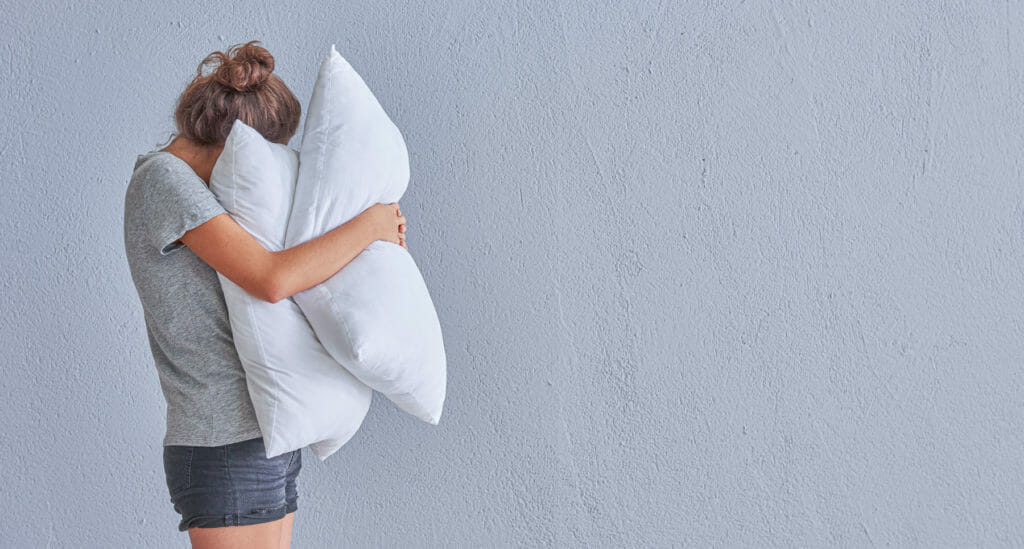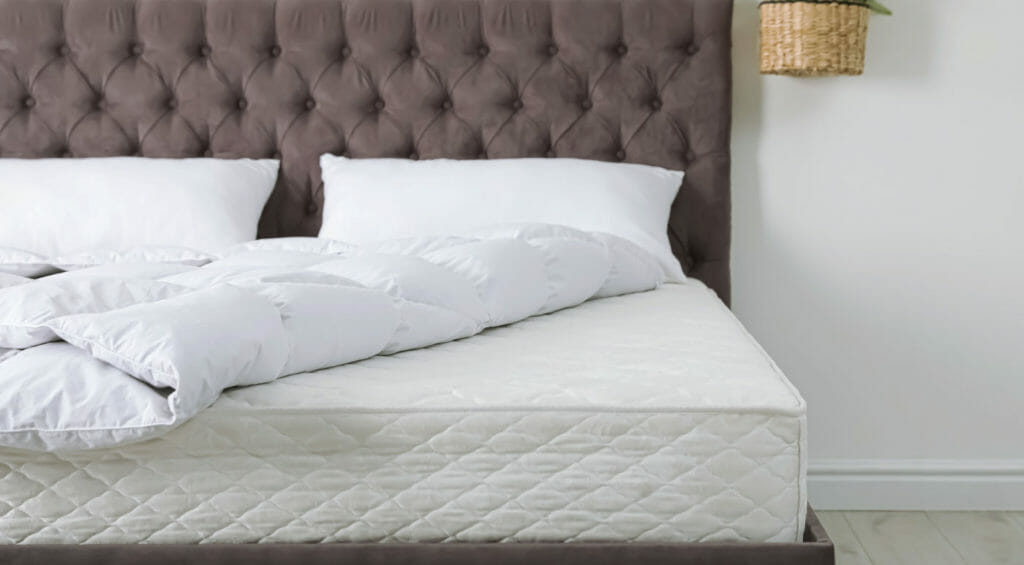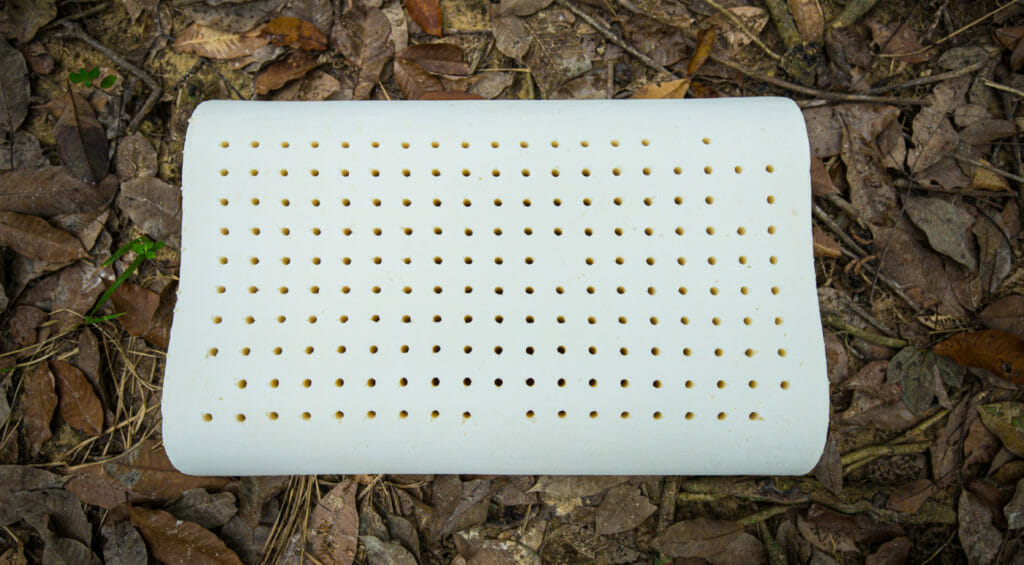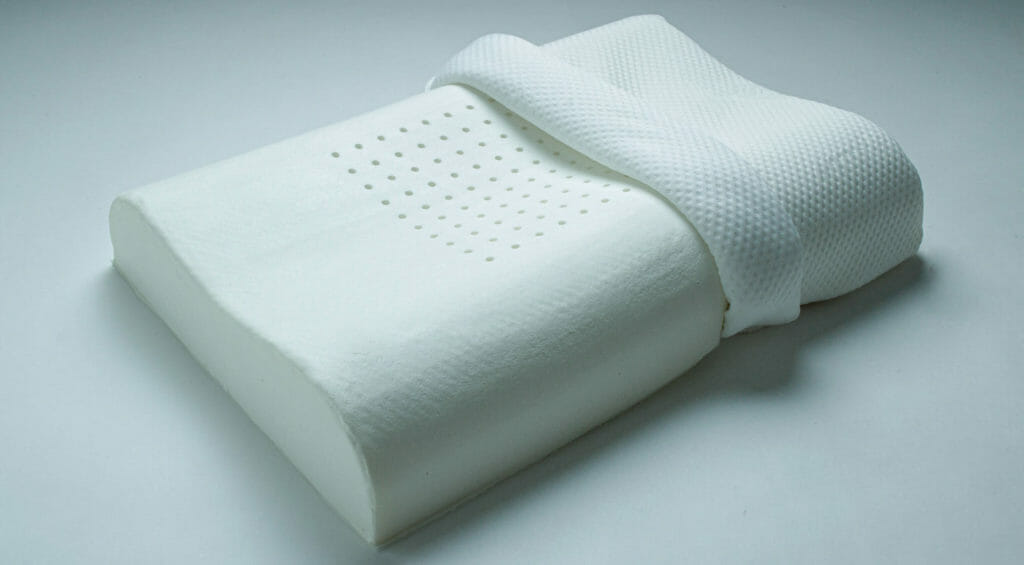
Choosing one of the best mattresses you can buy online is not the only way to enjoy a more comfortable night’s sleep. Your pillow can have just as big of an impact on how well you sleep. In fact, your pillow can help you enjoy less pain in your neck, shoulders, and even your back — that is, if you choose the right one.
Both latex and memory foam pillows are exceptionally popular. But which is right for you? Let’s compare a latex vs. memory foam pillow to understand which one you should choose.
When it comes to comparing latex vs. memory foam pillows, you’ll want to take note of several factors, but also consider your personal preferences. Choosing the right pillow for you depends on how you sleep, whether you have any pain or other issues, and more.
For example, if you suffer from back pain, you might look for a pillow that will help support proper spinal alignment and relieve your symptoms.
Latex vs. Memory Foam Pillows: What’s Right For You?

Studies have shown that an optimal pillow can greatly improve your overall sleep quality. With this in mind, you should pay attention to your pillow and whether it’s helping or hurting you. If you’re struggling with back, shoulder, or neck pain, your current pillow might not be providing adequate support.
Should you choose a new latex pillow or a memory foam pillow? Let’s compare the two to understand which one might be your best choice.
Memory Foam Pillows

Memory foam pillows are quite popular at the moment — many top-rated mattress manufacturers are now making their own memory foam pillows, too.
Memory foam was initially designed by NASA to make spaceship seats more comfortable. However, manufacturers quickly realized that this versatile material could do so much more, and memory foam was quickly incorporated into post-surgery bed padding, cushions for wheelchairs, and eventually, mattresses and pillows.
Memory foam’s properties are quite unique, as it can contour and shape around your body as you lie down. That means a memory foam pillow cradles your head gently and won’t cause pressure points.
At first touch, a memory foam pillow may feel somewhat firm. As you lie on it, your warmth starts to soften the material, and it begins to contour around your neck and head.
Memory foam is a completely man-made material, and there are no natural versions of this material.
The Benefits of Memory Foam Pillows
When you compare a latex vs. a memory foam pillow, you have to consider the pros and cons of each material. Let’s take a look at a couple of the advantages of a memory foam pillow:
- The contouring effect of memory foam can provide a better distribution of weight.
- The material is known for providing pressure relief.
- Memory foam pillows are good for people who suffer from back and neck pain.
Memory foam pillows come in different price ranges, but you should keep in mind that you really get what you pay for. A cheaply made memory foam pillow may not last very long and might not give you the same benefits as a higher-quality option.
The Drawbacks of Memory Foam Pillows
The major drawback of a memory foam pillow is heat retention. Memory foam is known to absorb heat and retain it. If you live in a warm climate, you may find that you start to sweat quickly, which is uncomfortable at night.
Plus, sleeping at too warm of a temperature can disrupt your rest, so you’ll want to carefully consider your memory foam pillow and whether it has any temperature-regulating properties.
Latex Pillows

Latex is a more traditional material that has been used for longer. So if you’re considering a latex vs. memory foam pillow, the tried-and-true option is latex.
You can buy pillows made from a natural form of latex, but many companies have started to produce synthetic versions as well. Originally, latex was made from the rubber tree’s sap by foaming it, which resulted in a material that was bouncy and soft.
Synthetic versions of latex feature similar properties as the original, natural version. However, the quality and durability of synthetic latex is not quite the same.
Benefits of Latex Pillows
When comparing latex vs. memory foam pillows, both materials offer durability as a significant advantage, but latex is known to last longer than the average memory foam option. Other benefits of latex pillows include:
- Latex is a naturally hypoallergenic material.
- Latex is also resistant to the growth of fungus.
- Latex pillows are softer than most memory foam.
- Heat dissipation is better compared to memory foam, which makes latex pillows good for people who are worried about being too hot at night.
Drawbacks of Latex Pillows
One of the major drawbacks of latex pillows is the fact that it can be quite confusing to pick the right one. With so many different ways in which latex can be made, as well as the choice between natural or synthetic latex, there are a lot of options to choose from.
Many people also find that a latex pillow has a distinctive smell for a short period of time after it’s unwrapped. Fortunately, this smell is not permanent, but it might be unpleasant for a few days.
The price of a latex pillow might also be seen as a drawback by many potential customers. These pillows are known to be on the higher end of the price scale compared to other pillows. This is especially the case if you want a pillow made from natural latex. Cheaper pillows are likely manufactured from a poor-quality synthetic latex.
A final potential drawback is the fact that some people have latex allergies. If you’re one of them, then a latex pillow will certainly not be the best pillow for you.
Conclusion
When comparing a latex vs. memory foam pillow, you need to consider multiple factors, from personal preferences to budget. Hopefully this overview has helped you decide which kind of pillow is best for you, and you’ll soon be enjoying a better sleep with your new pillow.